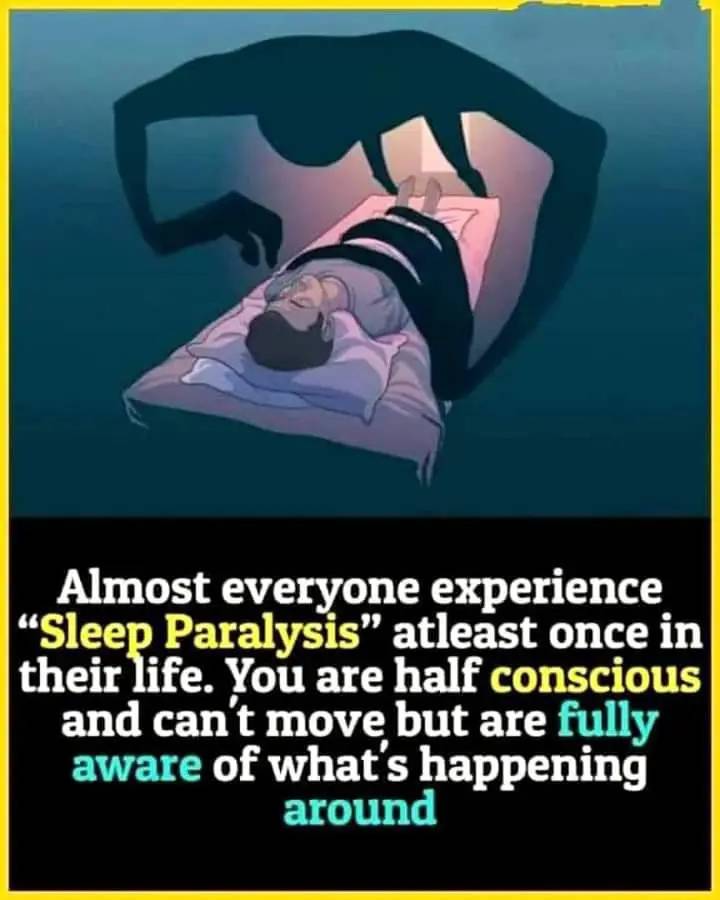Sleep paralysis is one of those eerie, unsettling experiences that almost everyone encounters at least once in their lifetime. It happens when a person transitions between sleep and wakefulness, but their mind wakes up before their body does. The result is a temporary inability to move or speak, while the person remains fully aware of their surroundings. The experience can feel both surreal and terrifying, often accompanied by vivid hallucinations or a sense of an “evil presence” in the room.

What Exactly Is Sleep Paralysis?
Sleep paralysis occurs during the transition between rapid eye movement (REM) sleep and wakefulness. REM sleep is when most vivid dreams occur, and during this phase, the brain paralyzes the body to prevent you from physically acting out your dreams. When you wake up during REM, your mind is alert, but your body remains in this paralysis state, which can be incredibly disorienting and frightening.
In addition to the inability to move, people experiencing sleep paralysis sometimes report feelings of pressure on their chest, a sensation of choking, or the perception that someone—or something—is in the room with them. These hallucinations can vary, but they often involve figures or shadows, sometimes described as menacing or threatening.
Why Does Sleep Paralysis Happen?
The exact cause of sleep paralysis isn’t fully understood, but several factors are believed to contribute:
- Sleep deprivation: Not getting enough rest or irregular sleep patterns can trigger episodes of sleep paralysis.
- Stress and anxiety: High levels of stress or emotional turmoil can disrupt sleep cycles and make sleep paralysis more likely.
- Sleep disorders: Conditions like narcolepsy or insomnia are known to increase the likelihood of sleep paralysis.
- Sleep position: Some studies suggest that sleeping on your back might increase the chances of experiencing sleep paralysis.
The Scary Part: Hallucinations and Feelings of Terror
For many people, the most terrifying part of sleep paralysis is not the immobility itself but the vivid hallucinations that can occur. Common experiences include seeing shadowy figures, feeling like someone is in the room, or even the sensation of being dragged or suffocated. Some individuals report hearing footsteps or whispers, heightening the sense of dread. These hallucinations are a result of the brain being in a dream-like state while the body is still paralyzed, creating a nightmarish blend of reality and imagination.
The Moral Lesson: Confronting Fear and Understanding the Mind
Though sleep paralysis can be deeply distressing, it is ultimately a physiological response that can be understood and managed. For many, the experience teaches them an important lesson about the power of the mind. It’s a reminder that fear, even in our most vulnerable states, often comes from within. Once we recognize the phenomenon for what it is—a temporary, harmless sleep disorder—we can approach it with less fear and more curiosity.
For those who experience sleep paralysis, one important piece of advice is to focus on relaxing and breathing through the episode. Understanding that it is a temporary condition can help lessen the anxiety and fear associated with it.
The moral lesson in sleep paralysis might be this: our fears often stem from not fully understanding what is happening, and when we confront those fears with knowledge and calm, we are empowered. It’s a reminder that in life, as in sleep, confronting our deepest anxieties with awareness and understanding can strip them of their power.
A Shared Human Experience
Sleep paralysis is a curious and eerie phenomenon that nearly everyone will face at least once. Despite its frightening nature, it is nothing to be afraid of. By learning more about it and recognizing it as a natural part of the body’s sleep cycle, we can reduce the fear that often accompanies it. The experience, while unsettling, can serve as a reminder of how the mind and body are deeply connected and how our perceptions of fear can change once we understand them.
So, the next time you find yourself trapped in that strange state of paralysis, remember: you are not alone, and you are not in danger. It’s just the body’s way of making sure you don’t act out your dreams—something most of us would probably be grateful for!

